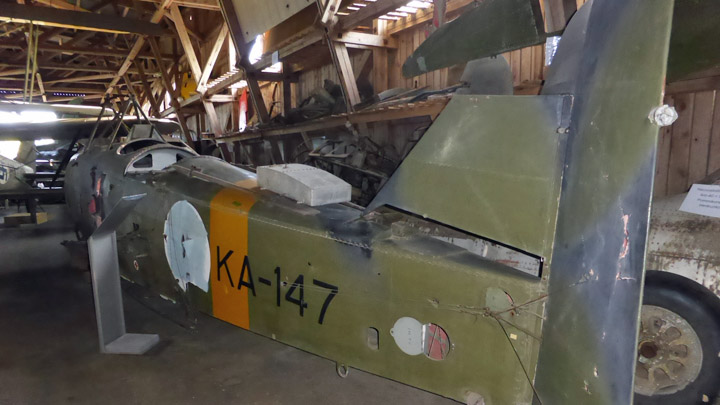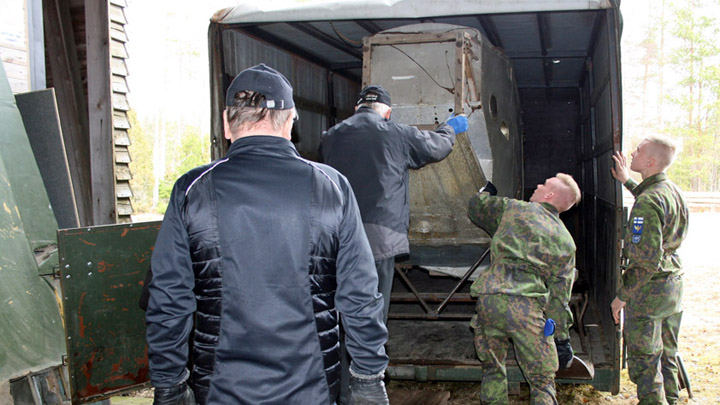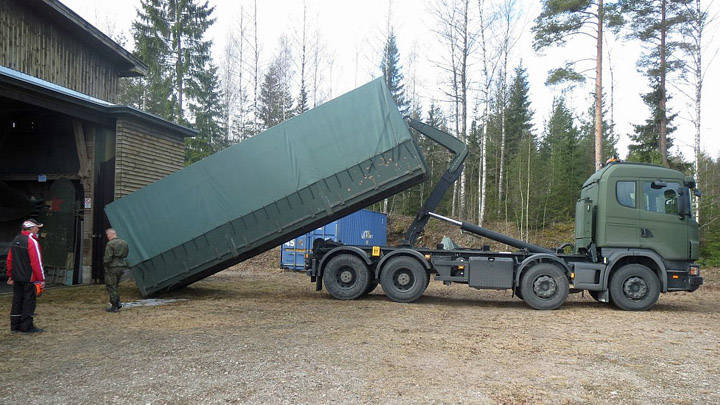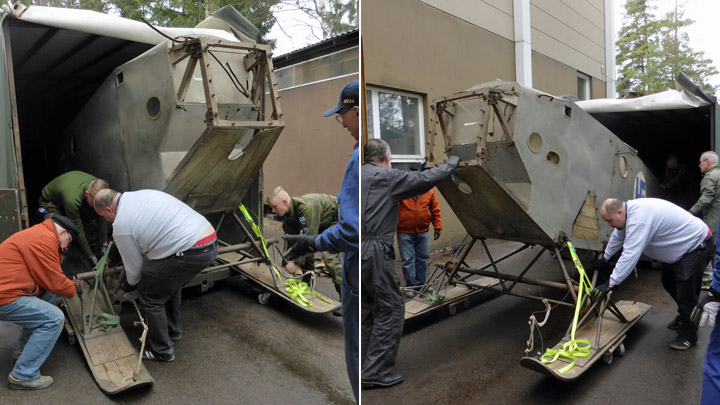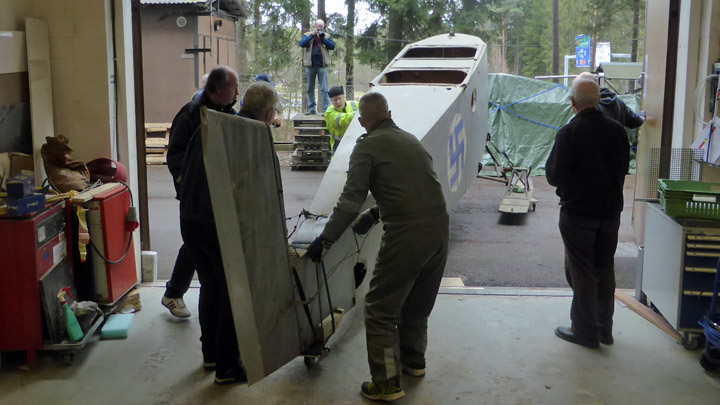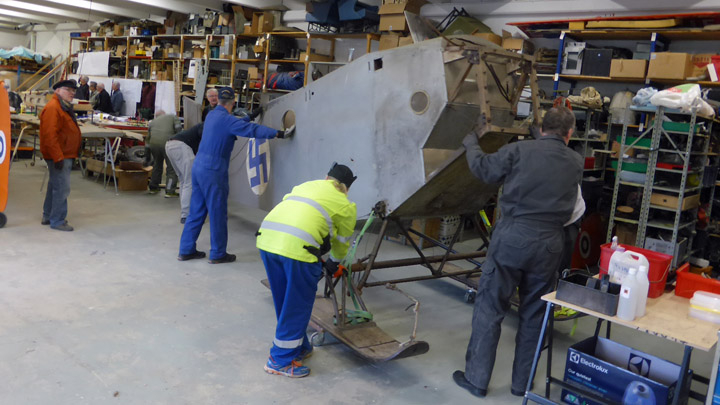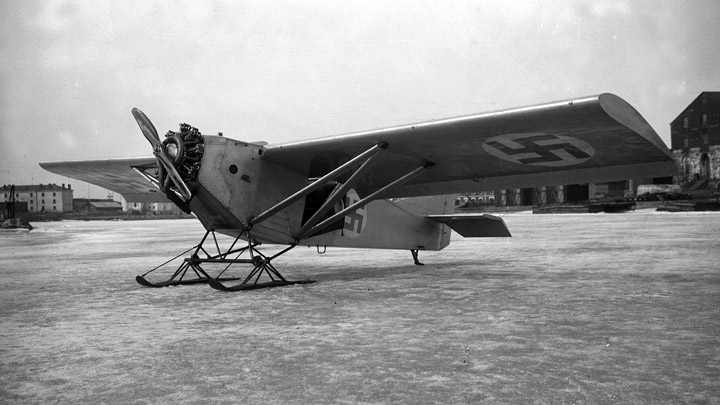VL Kurki - the new project for Tuesday ClubTorstai 28.4.2016 - Member of Tuesday Club Päijänne-Tavastia Aviation Museum, close to city of Lahti, has VL K.1 Kurki among its collection of aircraft. The plane was decided to become under restoration at Tuesday Club. This was made feasible by getting Valmet Tuuli III ready to be painted at Hämeenlinna Vocational college, Tavastia. For Tuesday Club work on Tuuli III will continue after painting only closer to the end of this year.
VL K.1 Kurki (Kurki meaning Crane in Finnish) was designed and built by State Aviation Factory (in Finnish: Valtion Lentokonetehdas = VL) in 1927 and it is the penultimate still existing aircraft by this factory to be renovated. The last one will be VL E.30 Kotka (Eagle) which is also preserved damaged at Päijät-Häme museum.
The sole Kurki has been at Päijänne-Tavastia Aviation Museum since late 1940s, when Vesivehmaa airfield's wartime hangar became a collection point for previous Finnish Air Force aircraft from 1920’s and 1930’s. These were stored at various places around in Finland. Päijänne-Tavastia Aviation Museum has also the I.V.L. D.26 Haukka I which Tuesday Club restored and returned last spring. (I.V.L. is short of Air Force Aircraft Factory which preceded VL. Haukka means Falcon.) Kurki’s fuselage has been featured at Päijänne-Tavastia Aviation Museum without wings. This aircraft has lost parts over the years, e.g. original items are missing from cabin. Also, it has no engine. There should be a Siemens-Halske Sh.12 radial at the bow.
Photo: Tapio Heinomaa On Tuesday, April 19, staff at Päijät-Häme museum loaded Kurki’s fuselage, horizontal stabilizer, and elevator onto Armed Forces truck. Carefully fastened they started their journey to the Finnish Aviation Museum.
Photo: Jarmo Tammisto When arrived in, Tuesday Club members took care of unloading the cargo to our museum’s workshop. Kurki has ski undercarriage. So, it was put on dollies to make it easier to move around.
Kurki’s wings will be brought to Tuesday Club when the fuselage is finished and returned to Päijät-Häme museum. With also wings restored eventually, the aircraft would be ready to be assembled and exhibited. The problem is that Päijänne.Tavastia Aviation Museum does not have enough free space for this.
This plane needs remedial conservation. Tuesday Club starts with cleaning surfaces and goes on with repairing damaged areas. Surfaces will be re-painted only at repaired areas and maybe where original paint is badly deteriorated. Repairing and painting of repaired areas will be done using methods which are according to Kurki’s time. We have good experience with this from similar remedial conservation of the I.V.L. D.26 Haukka I. Also we will complement missing instruments and equipment and re-build flight controls functional again.
As said, Kurki is from the year 1927. Its maiden flight was in March. It was designed at State Aviation Factory by chief designer Kurt Berger and factory director Asser Järvinen. It was meant for civil aviation as a trainer and for sports or general aviation. They also offered it to the Air Force as a liaison aircraft plus as a trainer for both pilots and observers.
Kurki on ice at Suomenlinna in March 1927. Photo: Finnish Aviation Museum. However, it was found to be missing in both technical and flight characteristics. Kurki was not stable enough in either yaw or roll. The prototype flew only 13 hours during 55 flights before further development was abandoned. In Finnish aviation history the right-angled Kurki is nick-named as ”Järvinen’s Box”. In case not mentioned, photos: Lassi Karivalo |
|
Avainsanat: aviation history, restoring, old aircraft, VL Kurki |



